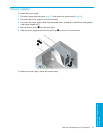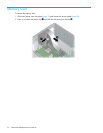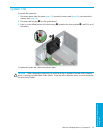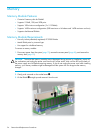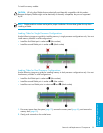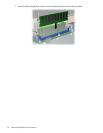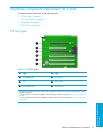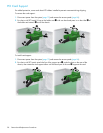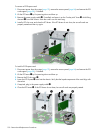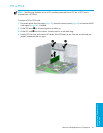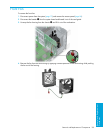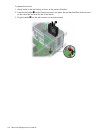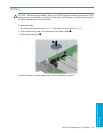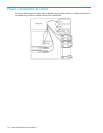
Removal and Replacement
Procedures
Removal and Replacement of Components 99
PCI Express
PCI Express, a new hardware interconnect standard (for example, I/O slots), is a point-to-point
architecture and uses a serial data transmission protocol. A single PCI Express lane consists of four wires
and is capable of transmitting 250MB in a single direction or 500MB in both directions simultaneously.
This bandwidth is not affected by what is happening on other PCI Express buses or legacy PCI/PCI-X
buses (provided that total bandwidth can be handled by the CPU and the memory subsystem). The
transmission protocol is similar to what is used for a LAN connection and contains error correction and
detection, packet addressing, and other network features.
PCI Express improves system attributes. PCI Express enables a low-power, scalable, high-bandwidth
communication path with a small number of connections (wires) compared to traditional parallel interfaces
(for example, PCI).
The PCI Express I/O slots can support other PCI Express cards with lesser bus bandwidth than what is
physically defined for the slot. Use the following table to determine compatibility.
NOTE: The HP xw9300 Workstation contains two PCI Express x16 slots. PCI Express slot three (see
illustration “PCI Slot Types” on page 97 is only active in the dual-processor configuration. This slot cannot
be used in a single-processor configuration.
Table 4-20 PCI Express Compatibility Matrix for HP xw9300 Workstation
PCI Express x16 Slot
PCI Express x1 Card Y
PCI Express x4 Card Y
PCI Express x8 Card Y
PCI Express x16 Card Y



